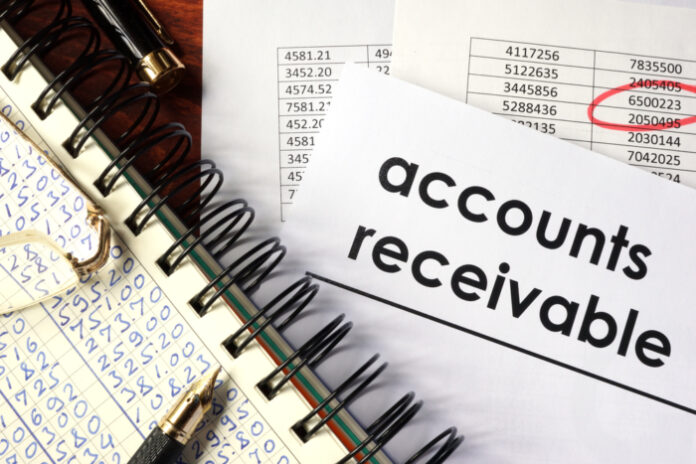How you handle your accounts receivable greatly affects your firm’s profit and cash flow. When carried out well, it can lead to on-time payments, satisfied customers, and plenty of cash on hand for other purposes. Nevertheless, ineffective management can result in lost productivity, inaccurate financial records, missed sales opportunities, and a cash flow shortage.
To simplify and expedite the process of collecting overdue payments and improve overall accounts receivable management, consider implementing any of the following eight best practices.
1. Keep a Separate Register for Accounts Receivable
No account, regardless of how little the balance may be, should you allow going beyond the threshold you have set. Keep records of late or non-paying clients in a register and stop doing business with them. Utilize financial analysis reporting to optimize and forecast the business’s cash flow cycle.
2. Use Third-party Collection Services
There will always be some customers who do not pay on time, no matter how hard businesses try to prevent it. A large percentage of them will completely stop making payments.
Businesses must maintain a steady cash flow and do not have the time or resources to pursue every client who fails to make a payment. A third-party collections firm is the best way to ensure prompt and complete payment from clients.
3. Ensure That All Invoice-related Paperwork Is in Order
If the sales staff is not frantic at the last minute trying to find a paper to complete the invoice, they will have plenty of time to do it. Meanwhile, having everything neatly filed away will come in handy if any clients have questions regarding their invoices. Payment delays should not happen for trivial reasons. Therefore, routinely scan, digitize, extract, and index all data.
4. Avoid Sending Late Invoices to Customers
Many businesses will make the blunder of sending invoices to their customers late. Clients will become more sluggish as a result of this. To them, it will make sense that if the vendor is not worried about receiving payment, then they should not be either.
Sending an invoice to a client as soon as possible and setting a precise deadline for collection will send a clear message about how seriously you take payments.
5. Be Ready for Explanations
You will encounter several justifications for missed payments when collecting payments from your clients. You might hear things such as:
- “We are yet to be compensated.”
- “The person who takes care of the bills isn’t around.”
- “The bill didn’t get to us.”
Being relentless and polite while reminding your client of the importance of paying you is crucial. If you are having trouble getting in touch with someone, try creating a rapport with the person responsible for authorizing invoice payments.
If you establish a set of well-defined terms and conditions and get your clients to consent to them during the sale, it will be harder for them to give explanations. If you would like to encourage prompt payment, you can offer a discount for doing so or negotiate an alternative mode of payback, such as monthly installments.
6. Be Persistent
It can be aggravating when a customer refuses to pay you or keeps presenting you with an explanation. Nevertheless, you must become diligent and keep contacting the customer until you are paid.
Sometimes you will have to ask a client more than once before he/she finally accepts to pay. Maintaining consistent persistence with your clients is crucial if you want your accounts receivable management efforts to bear fruit. That will entail relentlessly pursuing payment until you receive it in full.
The first thing to do is create a procedure for following up on unpaid invoices. The best course of action will depend on the nature of your business. However, collecting payments from customers should not be too much of a hassle if you have solid accounts receivable management in place.
It would help if you then established a schedule for sending reminders. The schedule will be specific to your company and may include things such as:
- Before sending a bill, determine whom to contact to comprehend the billing procedure.
- Send an email invoice upon completion of the work.
- Send a friendly “before due” email reminder to the client one week before the end of the agreed-upon payment period.
If the client has not paid you, it is time to get serious. You can consider calling your customer and then sending an email to follow up. After one month, you may want to write a follow-up letter that reiterates the missed payments penalty.
7. Don’t Wait Until Your Invoices Are Overdue
Waiting until an invoice is past due before taking any action is a terrible idea. If there are any warning indicators that a customer might not be able to pay the bill on time, it is crucial you get in touch with the customer as soon as possible. That will provide you with extra collection alternatives, including repayment arrangements.
If you want to keep track of your clients and get back to them when they are late with payments, you need to be well-organized and data-driven in your approach. Doing so will allow you to spot possible issues before they significantly affect your company.
Your chances of receiving payment in full and on schedule will improve the sooner you start chasing payments. It is best to be proactive rather than reactive. That will necessitate imposing stringent credit limitations on your clients and aggressively demanding payments, even before they become overdue.
If you wait until an invoice is past due, you will likely incur additional fees and a longer payment period. Sometimes, you may even be required to use debt recovery agencies to retrieve the money you are owed.
8. When Appropriate, Use a Debt Recovery Service
At some point, you could require the assistance of a debt collection agency. If you have exhausted all other options and still have not received a reimbursement after following the suggestions in this article, it might be time to bring in the experts.
Exploration is the initial step in selecting a debt recovery expert. There is no shortage of services to choose from, so it is essential to zero in on one with a solid reputation. When you have narrowed your options to a handful of viable options, it is time to compare them.
Be sure to inquire about things like:
- What kind of services do they provide?
- What is the typical rate of recovery?
- What will the cost be?
- How do they go about getting the money back?
Inquiring about such issues will help you choose the most suitable agency.
Customer interactions are crucial; therefore, it is critical to talk to them and figure out any problems before they get out of hand. Nevertheless, if you must hire debt collectors, you will want to select a reputable, courteous debt recovery service that will not harm your reputation or customer relations.
Final Thoughts
Now that we have examined eight accounts receivable management best practices, it is time to put them into practice. Adopt a fraction of these suggestions and best practices for accounts receivable management, and you will be able to swiftly organize your financial records and boost your company’s cash flow. The suggestions are for the betterment of businesses; however, the ultimate decision rests with top management.
Find a Home-Based Business to Start-Up >>> Hundreds of Business Listings.

















































